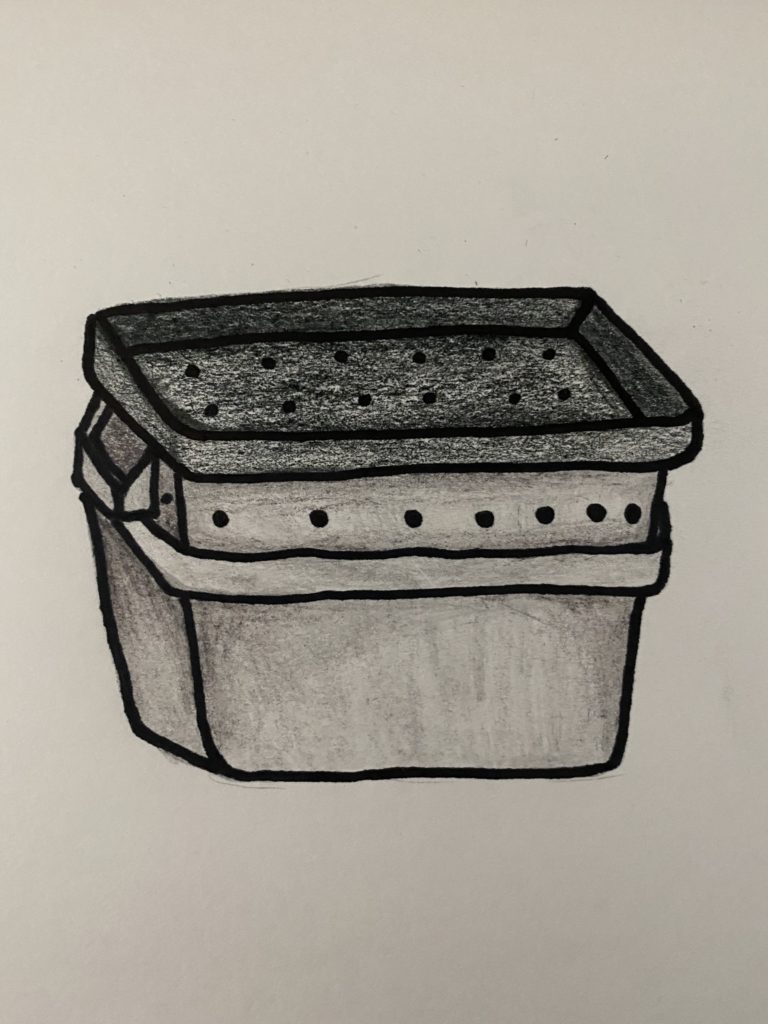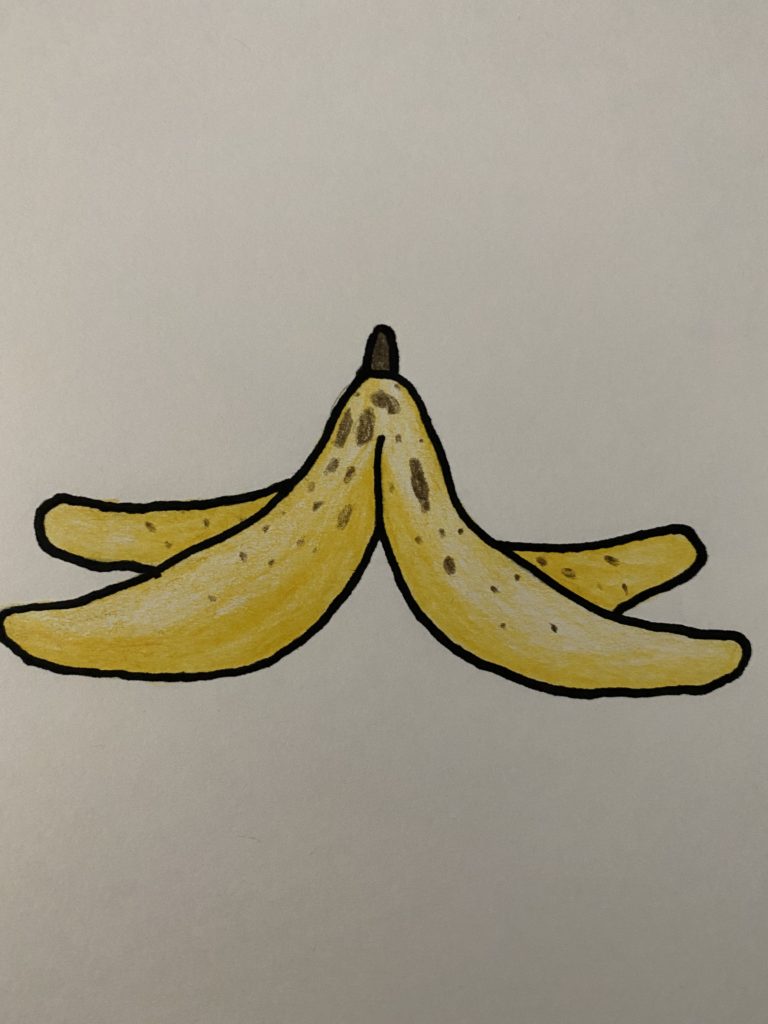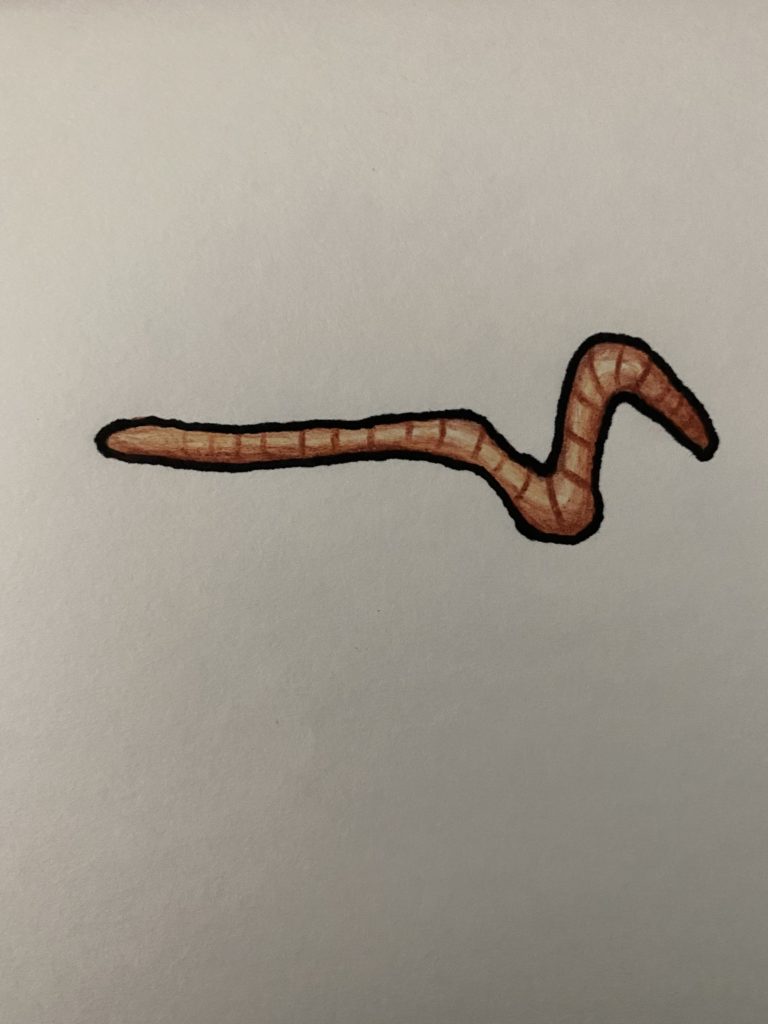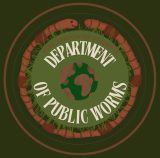Please note that this guide is designed primarily for residential kitchen composting, and therefore emphasizes materials such as newspaper and food waste over other possibilities like straw and horse manure. If you have questions about other composting strategies, please feel free to contact us!
Starting Materials

A worm bin, purchased or made from easily accessible and inexpensive materials according to our instructions. There are several types of worm bins and the type you have will slightly impact how you care for your worms. In general, plastic bins are more vulnerable to overheating when exposed to direct sunlight, but retain more water compared to wood bins. Stacking two bins is important in allowing for drainage, so consider the two bin method over just one.
Shredded Newspaper
Shredded newspaper, enough to fill your bin about 2/3 full when dry and fluffed up. If you would like to use another type of material such as shredded cardboard, straw, dried leaves, etc for bedding, just keep in mind that bedding serves several purposes: 1) to provide a carbon source, 2) to provide bulk and help keep food waste from matting down and blocking airflow, and 3) to absorb excess moisture. Straw can provide carbon and can provide bulk, but does not absorb much moisture, whereas cardboard doesn’t bulk up very well. Newspaper meets all 3 needs. If you don’t use newspaper, use a mix of other materials so all needs are met.
Compost Starter
Additional organic material is optional but can be very helpful when setting up a new bin as it can help introduce the proper microorganisms to the system. A bit of near-finished compost from another (healthy) bin can provide a starter microbe population that will reproduce faster than new microbes that must colonize the bin from scratch. If you are re-starting a bin after harvesting, keep a small amount of the harvested compost in the bin to help ease the transition and keep the microbe population consistent. Some compost bin kits include materials such as coir for bedding, this works well though it is probably best to mix it with a primary bedding like newspaper.
Food Waste

Food waste should consist of fruit and vegetable scraps and/or coffee grounds. Acidic or potent items such as citrus, onions, and hot peppers must be avoided– remember that a worm’s body is basically one large mucus membrane, so anything that stings your eye will be very painful for them. Some people feed their worms bread, rice, or beans, but be aware that these items may ferment or mold heavily in your bin and may disturb the worms in large quantities. Meat, dairy, and oils should be kept out of the bin as they will cause odors and attract pests.
Worms

Worms should be red wiggler worms, or Einsenia fetida. Some people use nightcrawlers or blue worms, but red wrigglers are considered the standard for vermicomposting because they can tolerate a wider range of conditions while still being extremely productive. You should have about 1 lb, or 1000 worms, for every square foot of bin space. You can buy worms at Island Seed and Feed, Healing Grounds Nursery, Uncle Jim’s Worm Farm, and many garden and hardware stores.
Setup
- If possible, you should try to set up your bin about two days before adding worms. This allows the moisture level to reach equilibrium and lets the food waste start to break down– worms do not actually eat fresh foods but rather feed on the microbes that thrive by decomposing food scraps.
- Cover the bottom of your bin with a layer of shredded newspaper. Mix it with your hand so that it is fairly fluffed up (it will compact with food and water, this is fine for the most part). It will be best to pre-moisten your paper.
- Add food waste. Start lightly, about a pound of food per pound of worms. The worms may be in shock for a day or two upon entering the new system and you want to make sure you don’t overfeed them. For this first feeding, you can apply food in a fairly even layer across the bin.
- Cover the food waste with a new layer of dry shredded newspaper. Again, make sure it is fluffed rather than compacted.
- If possible, let the bin sit for a day or two before adding worms. Check the bin to make sure moisture from the food has spread to the paper so that everything is lightly moist and there are no pooling liquids. If you cannot wait before adding worms or if the newspaper bedding is still dry, carefully add a small amount of water and mix the bin to moisten all material. If liquid is not draining or is accumulating in pools, see our troubleshooting guide.
- Pull back the top layer of paper, add worms and any organic bedding (coir, any material your worms came with, or old worm castings), and re-cover with the newspaper layer.
- Close the bin and place it somewhere where it will stay between 50 and 80 degrees and will not be in direct sunlight.
- You may want to shine a desk lamp or porch light at the worm bin for the first night. Worms often take a day or two to settle into their new home and may try to escape the bin, but their intense dislike of light can keep them inside.
That’s all for setup! Next, see Feeding and Maintenance to learn how to manage your worm bin over the next several months.

Pingback: Vermicomposting: Feeding and Maintenance | AS Department of Public Worms (DPW)